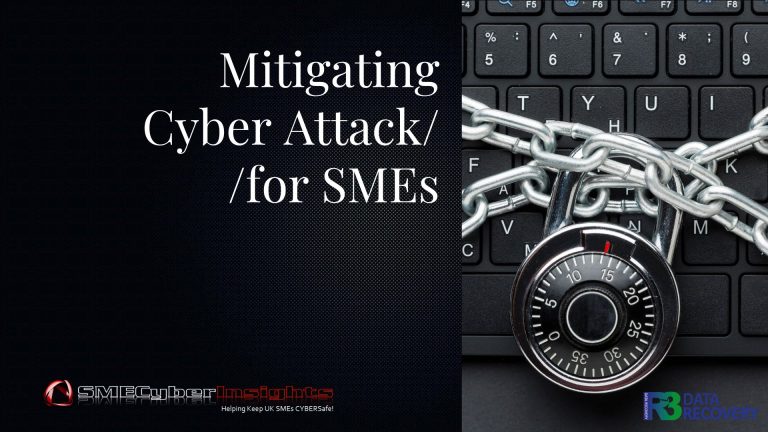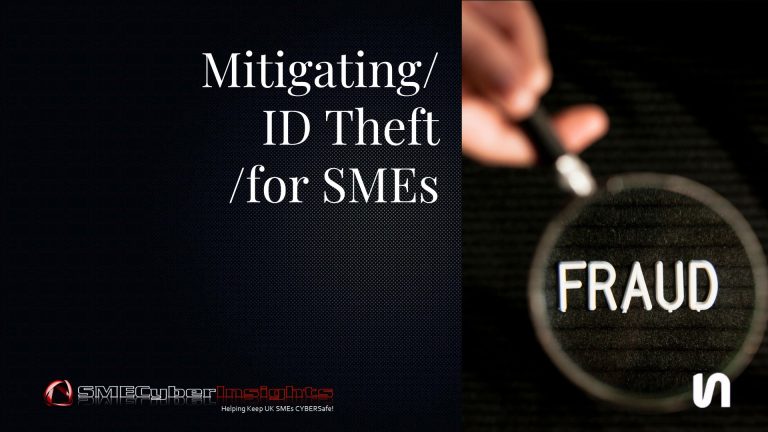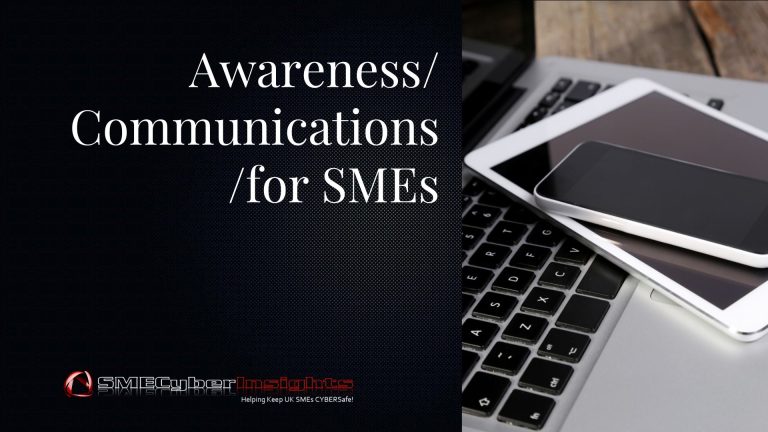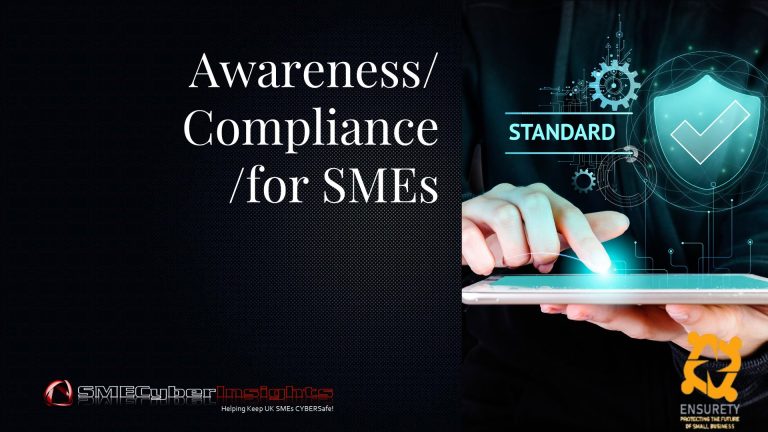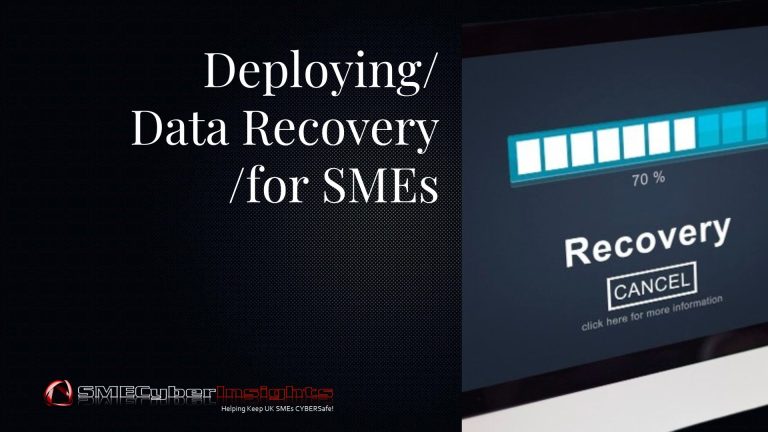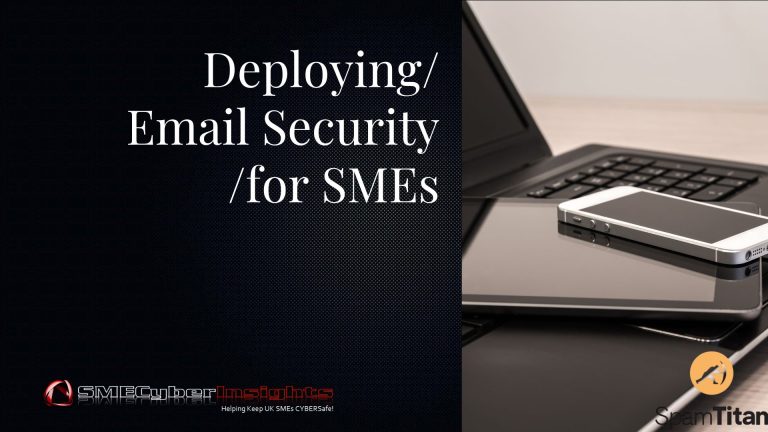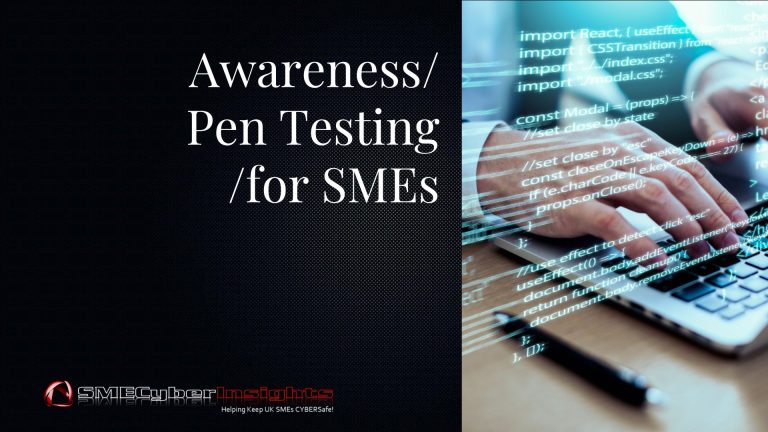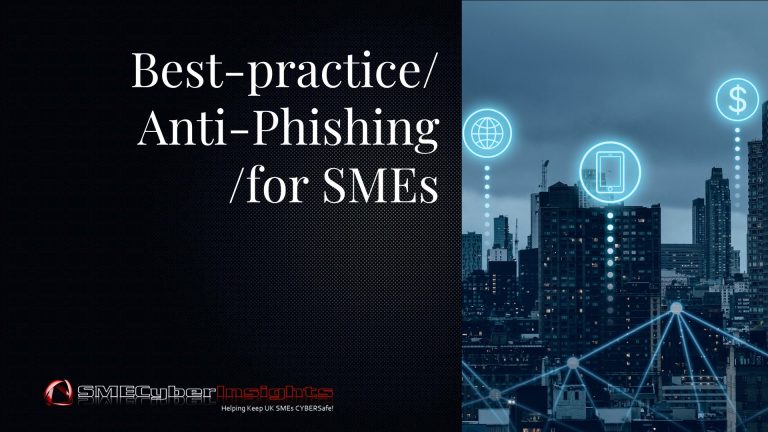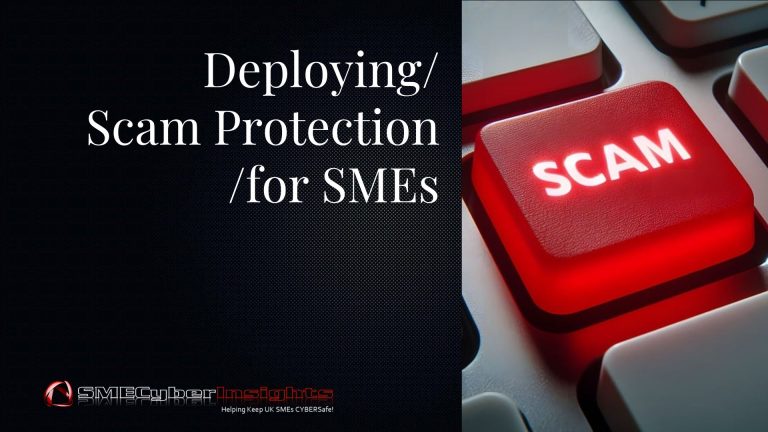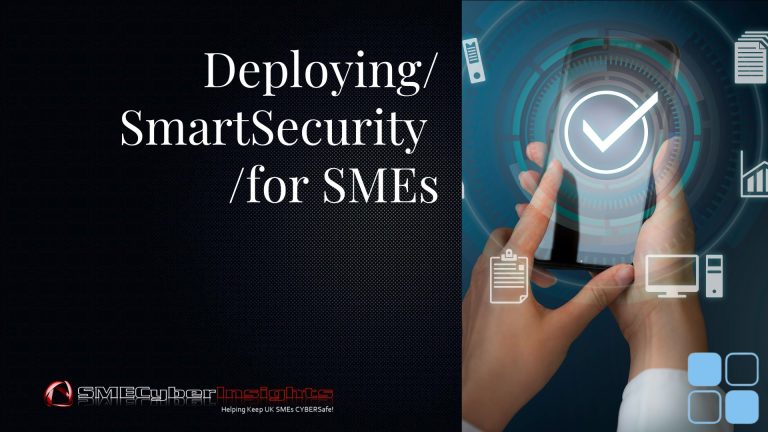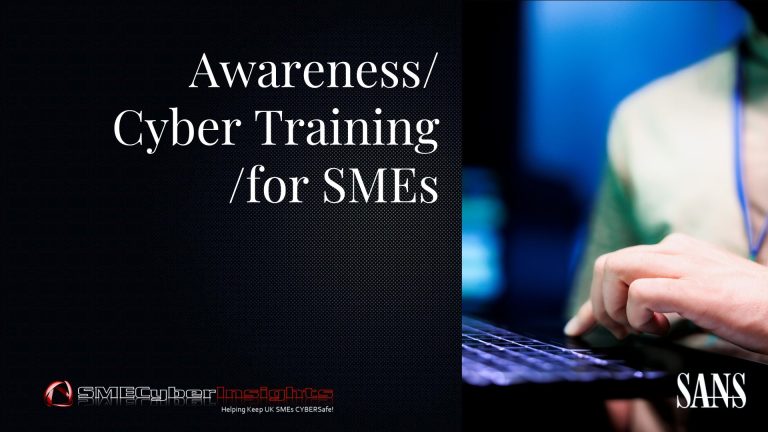SME Cybersecurity: Mobile Security Threats Facing UK Small Businesses in 2025
June 18, 2025Helping Keep Small Business CYBERSafe!
Gibraltar: Wednesday 18 June 2025 at 11:00 CET
SME Cybersecurity: Mobile Security Threats Facing UK Small Businesses in 2025
By: Iain Fraser – Cybersecurity Journalist
Published in Collaboration with: Nord VPN
SMECyberInsights.co.uk – First for SME Cybersecurity
Google Indexed on 180625 at 12:47 CET
#SMECyberInsights #SMECyberSecurity #SMECyberAwareness #CyberSafe #SME #SmallBusiness #MobileSecurity #SmartDevices
Executive Summary
Mobile devices have become the primary attack vector for cybercriminals targeting UK Small and Medium Enterprises (SMEs). With 78% of UK businesses now operating hybrid or remote work models, Smartphones and Tablets represent critical vulnerabilities that threat actors actively exploit. This report examines the offensive mobile security landscape, analysing specific threats to Android and iPhone devices, and provides actionable protection strategies for SME Cybersecurity.
The Mobile Threat Landscape for UK SMEs
Why Mobile Devices Are Prime Targets
Small and Medium Enterprises face unique challenges in mobile security. Unlike large corporations with dedicated cybersecurity teams, UK SMEs often lack the resources to implement comprehensive mobile device management (MDM) solutions. This creates opportunities for attackers who understand that mobile devices frequently contain:
* Business email accounts with privileged access
* Cloud storage credentials and sensitive documents
* VPN configurations for corporate network access
* Banking and financial applications
* Customer data and contact information
The “always-on” nature of mobile devices makes them particularly attractive to Cybercriminals. Users check their phones approximately 96 times daily, creating numerous opportunities for social engineering attacks and malicious app interactions.
Android Security Vulnerabilities in Business Environments
Operating System Fragmentation Risks
Android’s open-source nature creates significant security challenges for SME Cybersecurity. The fragmented ecosystem means that many business users operate devices with outdated security patches. Research indicates that 40% of Android devices used in UK business environments run operating system versions that are more than two years old.
Key Android vulnerabilities affecting SMEs include:
Privilege Escalation Attacks: Malicious applications can exploit kernel vulnerabilities to gain root access, bypassing Android’s security sandbox. Once compromised, attackers can install persistent backdoors, capture keystrokes, and intercept business communications.
Application Sideloading Risks: Android’s ability to install applications from third-party sources creates opportunities for malware distribution. Cybercriminals often disguise malicious software as legitimate business tools, targeting SMEs with fake productivity apps, document scanners, and communication platforms.
Supply Chain Compromises: Pre-installed applications on budget Android devices sometimes contain backdoors or data collection mechanisms. SMEs purchasing low-cost devices for their workforce may inadvertently introduce compromised hardware into their business environment.
Real-World Android Threats
Banking Trojans: Mobile banking malware specifically targets business accounts, using screen overlay techniques to capture login credentials. The Cerberus and Anubis banking trojans have been particularly active against UK SMEs, with losses averaging £45,000 per incident.
SMS Interception: Attackers exploit Android’s SMS handling to intercept two-factor authentication codes, bypassing security measures protecting business accounts. This technique is commonly used in Business Email Compromise (BEC) attacks targeting SME executives.
iPhone Security Challenges for SMEs
The iOS Security Myth
While iOS maintains a stronger security reputation than Android, iPhones present unique risks for SME cybersecurity. Apple’s closed ecosystem creates a false sense of security that can lead to complacency among business users.
Critical iOS vulnerabilities include:
Zero-Click Exploits: Sophisticated attack groups have developed iPhone exploits that require no user interaction. The NSO Group’s Pegasus spyware demonstrated how attackers can remotely compromise iOS devices through iMessage vulnerabilities, gaining complete device control.
Certificate Pinning Bypasses: Business applications often implement certificate pinning to prevent man-in-the-middle attacks. However, iOS jailbreaking tools can disable these protections, allowing attackers to intercept encrypted business communications.
Enterprise Certificate Abuse: Cybercriminals exploit Apple’s enterprise certificate program to distribute malicious applications outside the App Store. These applications can masquerade as legitimate business tools while harvesting corporate credentials.
iPhone-Specific Attack Vectors
iCloud Compromise: Business users often enable iCloud synchronization without understanding the security implications. Compromised Apple IDs can provide attackers with access to business documents, photos, and backup data stored in iCloud.
AirDrop Vulnerabilities: The convenience of AirDrop for file sharing creates security risks in business environments. Attackers can use AirDrop to distribute malicious files or exploit proximity-based vulnerabilities to compromise nearby devices.
Remote Workforce Mobile Security Risks
The Hybrid Work Challenge
The shift to remote and hybrid working has fundamentally changed the mobile threat landscape for UK SMEs. Employees now regularly use personal devices for business purposes, creating a complex security perimeter that traditional Cybersecurity measures struggle to address.
Home Network Vulnerabilities: Remote workers often connect business devices to unsecured home Wi-Fi networks. These networks frequently use weak encryption, default passwords, or outdated router firmware, providing attackers with entry points to intercept business communications.
Public Wi-Fi Risks: Mobile workers connecting to coffee shop, hotel, or transport hub Wi-Fi networks expose business data to interception. Evil twin attacks, where attackers create fake Wi-Fi hotspots, are particularly effective against mobile business users.
Device Sharing: In home environments, business devices may be used by family members or guests, potentially introducing malware or unauthorized access to corporate systems.
Bring Your Own Device (BYOD) Security Gaps
Many UK SMEs adopt informal BYOD policies without implementing proper security controls. This approach creates significant vulnerabilities:
Data Leakage: Personal applications on business devices can access and potentially exfiltrate sensitive corporate data. Social media apps, cloud storage services, and messaging platforms may have broad permissions that compromise business information.
Update Management: Personal devices may not receive timely security updates, leaving known vulnerabilities unpatched for extended periods. Users often delay updates due to convenience or data usage concerns.
Lost or Stolen Device Risks: Personal devices used for business purposes may lack proper encryption or remote wipe capabilities, creating data exposure risks if devices are lost or stolen.
Advanced Mobile Attack Techniques
SIM Swapping and Mobile Number Porting
Attackers increasingly target mobile phone numbers rather than devices themselves. SIM swapping attacks involve social engineering mobile network operators to transfer a victim’s phone number to an attacker-controlled SIM card. This technique is particularly effective against SME executives who use SMS-based two-factor authentication for business accounts.
Business Impact: Once attackers control a target’s phone number, they can reset passwords for business accounts, intercept authentication codes, and impersonate the victim in communications with colleagues and clients.
Malicious Mobile Applications
Cybercriminals develop sophisticated mobile applications designed to target business users. These applications often mimic legitimate business tools while containing hidden malicious functionality.
Fake Business Apps: Attackers create counterfeit versions of popular business applications, distributing them through third-party app stores or phishing campaigns. These applications may function normally while secretly collecting login credentials or business data.
Supply Chain Attacks: Legitimate business applications can be compromised through their development or distribution chain, introducing backdoors that provide persistent access to corporate systems.
Mobile Device Management (MDM) Bypass Techniques
Attackers actively research methods to bypass MDM solutions commonly used by SMEs. These techniques include:
Root/Jailbreak Detection Evasion: Advanced malware can hide root or jailbreak status from MDM systems, maintaining persistence while appearing compliant with security policies.
Certificate Installation Attacks: Attackers may trick users into installing malicious certificates that allow interception of encrypted traffic, even on MDM-managed devices.
Financial and Operational Impact on UK SMEs
Direct Financial Losses
Mobile security incidents can have severe financial consequences for UK SMEs. The average cost of a mobile-related data breach for small businesses is £65,000, including direct losses, regulatory fines, and recovery costs.
Regulatory Compliance: UK Data Protection Act 2018 and GDPR impose significant penalties for data breaches involving personal information. Mobile device compromises often trigger notification requirements and potential fines up to 4% of annual turnover.
Business Disruption: Mobile security incidents can disrupt business operations for days or weeks, particularly if attackers gain access to critical business systems through compromised mobile devices.
Reputational Damage
SMEs often rely heavily on customer trust and local reputation. Mobile security breaches that expose customer data or business communications can cause lasting reputational damage that affects customer retention and business growth.
Comprehensive Mobile Security Strategy for SMEs
Device Management and Policy Framework
Implement Mobile Device Management (MDM): Even SME should deploy basic MDM solutions to maintain visibility and control over business-connected mobile devices. Modern cloud-based MDM platforms offer affordable options specifically designed for SMEs.
Develop Clear Mobile Security Policies: Establish written policies covering acceptable use, security requirements, and incident response procedures for mobile devices. Ensure all employees understand their responsibilities for protecting business data on mobile devices.
Regular Security Assessments: Conduct quarterly reviews of mobile device security, including application inventories, operating system update status, and compliance with security policies.
Technical Security Controls
Enforce Device Encryption: Require full-device encryption on all mobile devices that access business data. Both Android and iOS offer built-in encryption capabilities that should be mandatory for business use.
Implement Multi-Factor Authentication: Deploy app-based or hardware token MFA solutions rather than SMS-based authentication, which is vulnerable to SIM swapping attacks.
Network Security Measures: Use VPN solutions for all remote access to business systems. Consider implementing zero-trust network architectures that assume mobile devices may be compromised.
Application Security: Maintain approved application lists and prohibit installation of unauthorized software on business devices. Regularly review and update application permissions.
Employee Education and Awareness
Security Training Programs: Conduct regular mobile security awareness training covering current threats, safe practices, and incident reporting procedures. Focus on practical scenarios relevant to your business operations.
Phishing Simulation: Implement mobile-focused phishing simulation programs to test and improve employee ability to recognize social engineering attacks targeting mobile devices.
Incident Response Training: Ensure employees know how to report suspected mobile security incidents and understand the immediate steps to take if a device is lost, stolen, or compromised.
Backup and Recovery Procedures
Data Backup Strategies: Implement automated backup solutions for business data stored on mobile devices. Ensure backups are regularly tested and can be quickly restored in case of device compromise or loss.
Remote Wipe Capabilities: Deploy solutions that allow immediate remote wiping of business data from lost or stolen devices. Test these capabilities regularly to ensure they function when needed.
Emerging Threats and Future Considerations
Artificial Intelligence in Mobile Attacks
Cybercriminals increasingly use AI to enhance mobile attack techniques. Machine learning algorithms can automate social engineering attacks, create more convincing phishing messages, and adapt malware to evade detection systems.
Deepfake Technology: Voice deepfakes created using AI can be used in vishing (voice phishing) attacks targeting mobile users, making it difficult to verify the identity of callers requesting sensitive information.
Internet of Things (IoT) Integration
As SMEs adopt IoT devices for business operations, mobile devices often serve as control interfaces for these systems. Compromised mobile devices can provide attackers with access to IoT networks, creating new attack vectors for business disruption.
5G Security Implications
The rollout of 5G networks introduces new security considerations for mobile devices. While 5G offers improved security features, the complexity of the technology creates new potential vulnerabilities that SMEs must understand and address.
Implementation Roadmap for SMEs
Phase 1: Immediate Actions (0-30 days)
* Conduct inventory of all mobile devices accessing business systems
* Enable device encryption and screen locks on all business devices
* Implement basic mobile device management solution
* Update all mobile operating systems and applications to latest versions
Phase 2: Policy and Process Development (30-90 days)
* Develop comprehensive mobile security policy
* Implement multi-factor authentication for all business accounts
* Deploy VPN solutions for remote access
* Establish incident response procedures for mobile security events
Phase 3: Advanced Security Measures (90+ days)
* Implement advanced threat detection solutions
* Conduct security awareness training for all employees
* Establish regular security assessment schedule
* Develop business continuity plans for mobile security incidents
Key Recommendations for SME Cybersecurity Teams
Adopt a Risk-Based Approach: Focus security investments on protecting the most critical business data and systems. Not all mobile devices require the same level of security controls.
Leverage Cloud-Based Security Solutions: Modern cloud-based mobile security platforms offer enterprise-grade capabilities at SME-friendly prices. These solutions can provide advanced threat detection and response capabilities without requiring dedicated IT staff.
Establish Vendor Partnerships: Work with trusted technology partners who understand SME cybersecurity challenges and can provide ongoing support for mobile security initiatives.
Regular Security Reviews: Schedule quarterly reviews of mobile security posture, including threat landscape updates and control effectiveness assessments.
Invest in Employee Education: Human factors remain the weakest link in mobile security. Ongoing education and awareness programs provide the highest return on security investment for most SMEs.
Conclusion
Mobile devices represent both tremendous business opportunities and significant security risks for UK SMEs. The offensive mobile security landscape continues to evolve, with cybercriminals developing increasingly sophisticated techniques to exploit the unique vulnerabilities of smartphones and tablets in business environments.
Success in SME Cybersecurity requires a comprehensive approach that addresses technical controls, policy frameworks, and human factors. Organizations that proactively address mobile security risks will be better positioned to leverage the productivity benefits of mobile technology while protecting their business from Cyber threats.
The investment in mobile security should be viewed not as a cost centre but as a business enabler that allows SMEs to confidently embrace mobile technology and remote work models. As the threat landscape continues to evolve, maintaining strong mobile security posture will become increasingly critical for business survival and growth in the digital economy.
By implementing the recommendations outlined in this report, UK SMEs can significantly reduce their mobile security risk profile while maintaining the flexibility and productivity advantages that mobile technology provides. The key is to start with basic security hygiene measures and progressively implement more advanced controls as business needs and threat levels evolve.
What is a VPN & Does my SME Need one? A VPN is a Virtual Private Network a method of securing your communications credentials. When it comes to Small and Medium-sized enterprises (SMEs), the choice of VPNs can significantly impact the security and efficiency of their operations.
The NordVPN service allows you to connect to 5600+ servers in 60+ countries. It secures your Internet data with military-grade encryption, ensures your web activity remains private and helps bypass geographic content restrictions online. Join NordVPN Today and Save up to 73% and Get 3 months Extra Free – Rude Not to …!
UK Small Business Owner? Join SMECyber Free Now! & Access the SME Cyber Forum – Read, Learn, Engage, Share …
The Latest SME Cybersecurity News, Threat Intelligence & Analysis, Timely Scam Alerts, Best-practice Compliance, Mitigation & Resources specifically curated for UK Based SMEs in a Single Weekly Email direct to your Inbox or Smart Device together with Unrestricted Free Access to our entire SME Cyber Knowledge & Tutorial Library.

